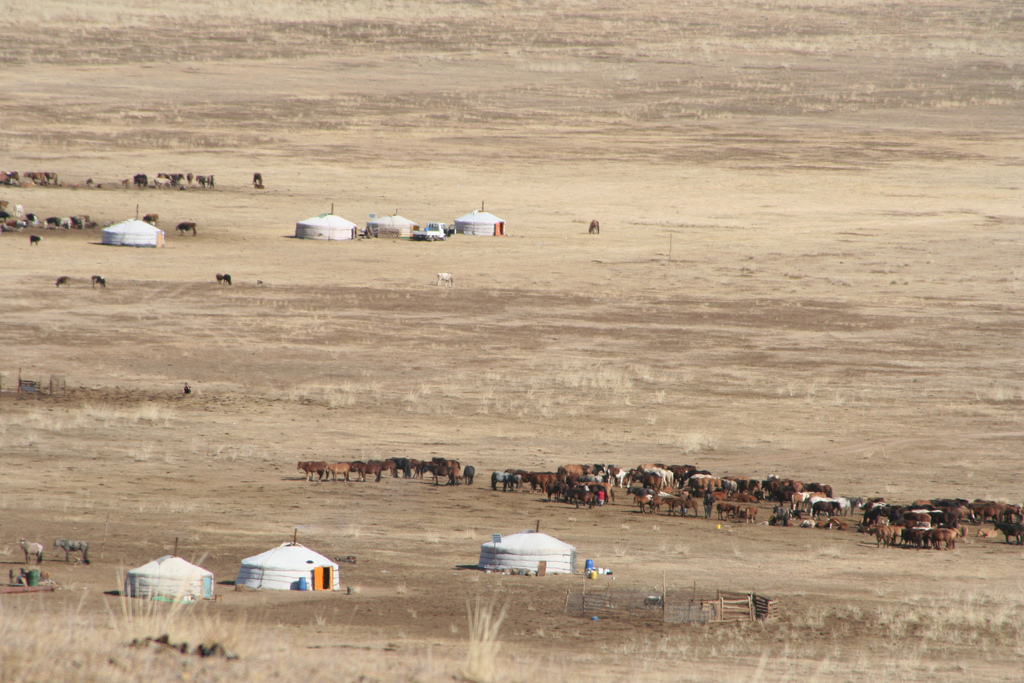 Evolution & Behaviour
Evolution & Behaviour
The ancient origin of some modern Asian populations revealed by ancient DNA
Studying ancient DNA can help us to travel backward in time to the origins of modern populations. A study on human remains from 8000 years ago sheds light on the ancient origin of modern Asian populations.

The origin and the evolution of today's diverse populations is a complex process to study and clarify. Nevertheless, the recovery of genetic material from old remains such as bones, the so-called ancient DNA (aDNA), adds a new important source of information.
aDNA can provide information on extinct populations and give a glimpse to consequential episodes in human evolution. One such example is the so-called neolithic transition, the change from a society that depends on hunting and food gathering to one that relies on agriculture. Such a change supports higher population sizes.
The first authentic aDNA was collected about 30 years ago, but large-scale studies have only become common in the last decade due to technical challenges, such as the degradation of genetic material and contamination by other organisms like soil bacteria or even modern humans.
In Western Eurasia, the sequencing of the aDNA showed that modern populations are the result of the progressive mingling of three major source populations over the last few thousand years: the Western Hunter gatherers, the Anatolian farmers who brought agriculture into Europe, and the Steppe people who came from the East during the Bronze age. The increasing detail with which we have been able to reconstruct the history of Western Eurasian populations contrasts greatly with how little we know of their Eastern Asian counterparts, where there is a lack of data from aDNA. To shed light on the origin of East Asian populations, we extracted DNA from 8000-years-old human remains found in a cave in the Russian Far East. This genetic data comes from two individuals of an ancient hunter-fisher-gatherer community and has been compared to publicly available genetic data mainly coming from modern populations.
To our surprise, the aDNA of the two ancient individuals revealed their genetic similarity to several modern-day populations that live in the same area and in particular to the Ulchi, who are Tungusic-speakers from the Russian section of the Amur Basin.
We have to note that the Ulchi form a small population retaining a traditional fisher-gatherer lifestyle until recent historical times: on one side the small size of the population obscures the small signals of the mixing of populations explained before; on the other, the fish-gatherer lifestyle reduces the intermingling with farmers.
The same East Asian aDNA has been also used to investigate the theory of a dual origin of the modern Japanese population. According to this, the Japanese are descendants of two main migratory waves into the Japanese archipelago: the initial hunter-gatherer settlers and a later wave of agriculturalists, who brought wet-rice agriculture from southern China through the Korean Peninsula. The analysis of new samples supports this theory: the corresponding two components are still found in the Japanese population and our ancient samples provide a good proxy for the hunter-gatherer component.
A similar argument could also be made for the origin of modern-day Koreans, who experienced, as well as the Japanese, a certain level of contact with the neighboring northern and southern populations throughout their history. Unfortunately, in order to determine if they are the result of a mixture between two distinct populations or evolved as an intermediate population with contacts with both further north and further south populations, we need higher quality data.
In summary, the DNA extracted from the bones of east Asian individuals who lived around 8000 years ago proved to be remarkably similar to that of certain contemporary populations in the same area (the Ulchi, in particular). Also, modern Japanese and Korean populations appear to partially descend from related ancient hunter-gatherers. Such a connection of the modern populations to the ancient hunter-gatherers is unlike what is seen in Europe and implies that the transition to a modern lifestyle happened differently in East Asia. However, to uncover the details of these differences, more aDNA sequencing data is needed from this region.
Original Article:
Siska, V. et al. Genome-wide data from two early Neolithic East Asian individuals dating to 7700 years ago. Science Advances 3 (2017).Edited by:
Dr. Giacomo Rossetti , Senior Scientific Editor
We thought you might like
GMOs are not a human invention: sweet potato is a naturally transgenic food crop
Jul 6, 2015 in Plant Biology | 3 min read by Tina KyndtA new code for a new life
May 26, 2016 in Maths, Physics & Chemistry | 3.5 min read by Jordan CostafrolazAmoebas trap bacteria using nets of DNA: the same mechanism as human immune cells
Jan 27, 2017 in Evolution & Behaviour | 3.5 min read by Lukáš NovákWhat happens to our genes in the twilight of death?
Feb 28, 2017 in Health & Physiology | 3.5 min read by Peter Noble , Alex PozhitkovMore from Evolution & Behaviour
Cicada emergence alters forest food webs
Jan 31, 2025 in Evolution & Behaviour | 3.5 min read by Martha Weiss , John LillSize does not matter: direct estimations of mutation rates in baleen whales
Jan 29, 2025 in Evolution & Behaviour | 4 min read by Marcos Suárez-MenéndezThe Claws and the Spear: New Evidence of Neanderthal-Cave Lion Interactions
Jan 22, 2025 in Evolution & Behaviour | 3.5 min read by Gabriele RussoA deep-sea spa: the key to the pearl octopus’ success
Jan 20, 2025 in Evolution & Behaviour | 3.5 min read by Jim BarryFeisty fish and birds with attitude: Why does evolution not lead to identical individuals?
Aug 31, 2024 in Evolution & Behaviour | 3 min read by Lukas Eigentler , Klaus Reinhold , David KikuchiEditor's picks
Trending now
Popular topics


